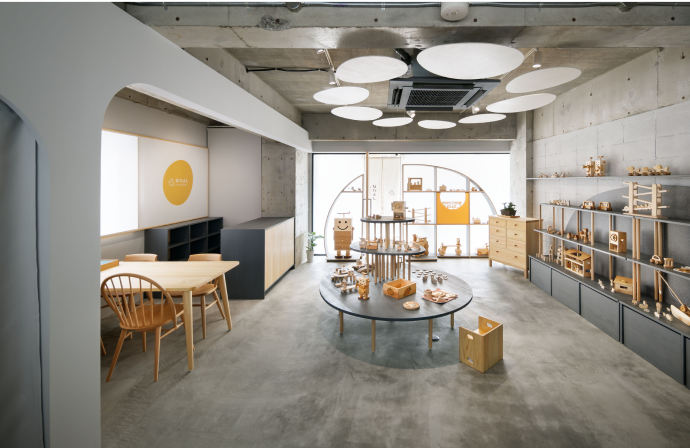
| Name of the school | Tezukayama International Kindergarten |
| Delivery year | March 2018 |
| Target/Item | Montessori furniture set |
Montessori Education and Furniture

What is Montessori education?

Montessori education is an educational system created by Maria Montessori, an Italian specialist in early childhood education. This educational method is based on physiology and ecosystems, and everything from how to interact with children to creating an environment is based on the laws of life and natural programs. It places emphasis on what interests children, and the idea is that parents and early childhood teachers are supporters who teach children things they do not understand. It is an educational method that fosters children's autonomy and develops their independence and ability to see things through to the end during their early childhood.
With the changing times
With the development of IT, we can play games and watch TV on our smartphones, and refrigerators and washing machines can be operated with the push of a button. Every town is becoming more urbanized, and there are only small parks in town, and you can't experience watching or catching insects in the fields without paying.
Children are curious about the life around them

But children have an incredible sense of curiosity. All sorts of things happen in our daily lives, and for children who have only been born a few years ago, there are many things they are experiencing for the first time. The sound of a train, the movement of a tractor, the flowers and insects on the road where we make coffee every day, etc. They become interested in these things and begin to think, "I want to try them!"
First, show them how to do it, let them try it, and then support them.

If your child shows an interest, first teach them how to do it carefully and slowly. Then let them try it. Even if they can't do it at first, they will definitely be able to do it, so if you acknowledge what they've done, they will feel a sense of accomplishment.
The timing of learning is up to the children

If parents are in a hurry, they may think, "It's quicker to do it," "It's dangerous, so I won't let them touch it," or "It's too early until they reach a certain age," but when a child shows an interest, that's the right timing. This is truly a natural program.
This is the same as the words of Yamamoto Isoroku, "People will not be moved unless you show them, tell them, let them do it, and praise them."
What children need in their early childhood.

Montessori education says that it is extremely important for children to use their five senses in their experiences during their early years. This period, known as the sensitive period (ages 3 to 6), is a time for honing one's sensibilities, and it is during this time that children experience things such as mud balls and soil in the sandbox, smell flowers and vegetables, notice how beautiful things look, listen carefully to the soft sounds of insects' wings, and even get a taste of home-cooked food. In this way, children hone their sensibilities from nature and everyday life, and by concentrating on things, they develop a spirit of inquiry and the ability to discover new things.
Creating an environment in the garden

Nurseries that practice Montessori education place great importance on creating mechanisms, environments, and systems that will stimulate children's active interest.
The shelves are simply used to display teaching materials.

In Montessori education, simple shelves are labeled with labels and the locations of items are determined. Children understand where things are, and they also return them to the same place. It is important that the height is a little lower than the child's eye level and easy to see.
Something that is where it should be...

Even adults get frustrated when things are not where they should be in their daily lives, and have to go to the trouble of looking for them. Children are often unable to tidy up because they cannot decide where to put things in the first place, and because they have not decided, it is often difficult to tidy up when you tell them to. This feeling is the same for infants and young children, and children will get upset if things are not where they should be. All furniture in Montessori education is labeled so that you can identify the location of things.
After delivery

First, when we visited Tezukayama International Kindergarten, the teaching materials (including toys) were neatly organized and always lined up neatly. I feel that this is something that we should learn from in our factory. They put them back in their proper place. I think this is the time when children develop the mindset of thinking about the next generation.

About 30 years ago, when I was still a child, my family lived in the mountains without a TV (well, there was one but the channels didn't show). All we had was a workshop for my parents' work. I didn't feel it was an inconvenience at the time, but looking back now, I'm amazed I was able to raise my child there. The water was often cut off as well... But I think that experience helped me develop the ability to live, and I'm grateful to my parents for studying early childhood education.



